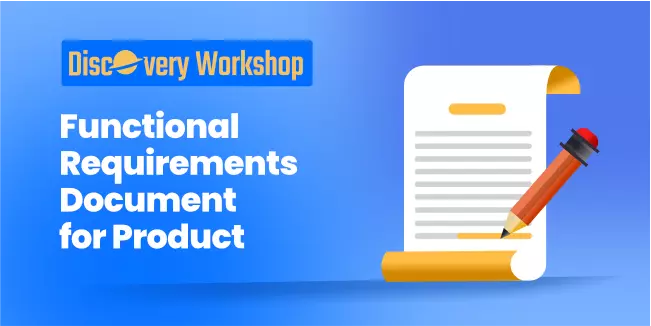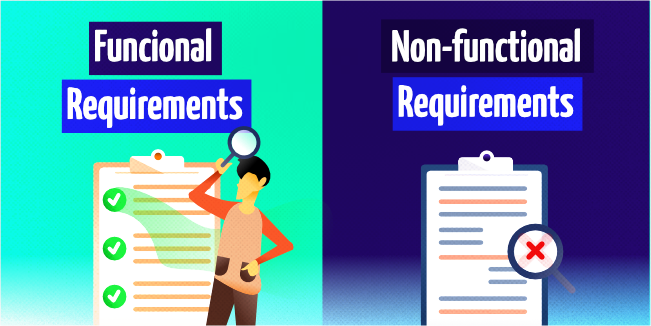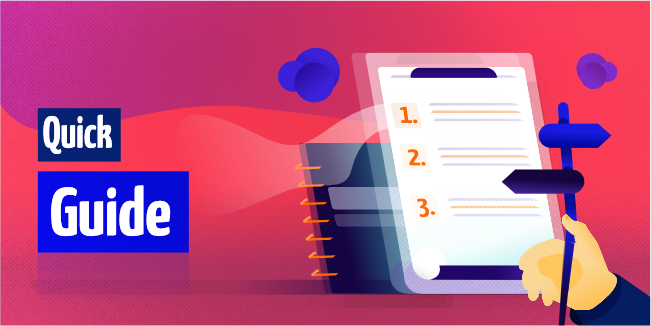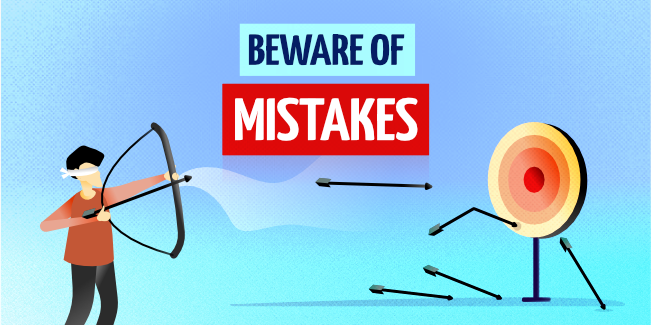earlyproduct
document
discoveryworkshop
Functional Requirements Document for your Product

Getting the requirements correct is crucial to the success of any project. Failure to properly define and document them can lead to miscommunication between stakeholders, endless modifications, and needless delays.
That's why it is obligatory to understand every aspect of your product. Creating a well-designed product roadmap and measured project budget can make the whole process much more effective and transparent. You can learn more about these design elements in the relevant articles from the Discovery Workshop series. Being a Product Owner, you should keep with business rules to be credible and avoid problems with the following steps when creating the product.
This article is the next stage of the journey in our study, which is the Discovery Workshop. Here we will look at what functional requirements are and why it's critical to document them in further detail.
What is a Functional Requirements Document?
The Functional Requirements Document (FRD) is a formal statement of a product's functional requirements. It serves a similar purpose as a contract. In this document, the developers agree to provide the capabilities specified. The client agrees to accept the product if it provides the capabilities specified in the FRD.
Functional requirements describe the system's intended behavior. This behavior may take the form of services, activities, or functions that the system must accomplish. The term "requirements" covers system computations, data processing and transformation, user interface, and interaction with the software. The document should be adjusted to meet the requirements of a specific project.
The Functional Requirements Document (FRD) has its own set of rules. The first one demonstrates that the product meets the business objective and is synonymous with the business process in the next several years. It also includes a complete set of product requirements. There is no room for anyone to presume anything that isn't covered in the FRD. It is worth remembering that this solution is independent. They describe system calculations, data manipulation and processing, user interface, and product interaction. The FRD does not force the designers to make any specific design choices. For that reason, any reference to a specific technology in an FRD is incorrect.
The Functional Specification
The functional specification is intended to be understood by a broad audience. The system should be understood, but no technical expertise is needed to comprehend this paper.
It's beneficial to include the purpose behind the functional requirement and its relevance to other criteria to give context for developers and testers.
Once the ambiguity has been resolved, the context may assist in preventing misinterpretation. It can aid in fully comprehending the requirements meaning and offer comments that may help refine and make it even more precise.
Why should you document Functional Requirements?
Documenting and aligning on functional requirements has a lot of advantages:
The stakeholders have a single source. All custom software developers, UI/UX designers, and QA testers are kept on the same page and working towards the same goal by clearly defined requirements, minimizing misunderstandings.
Less time is spent in meetings. There is no need for frequent meetings when the staff has a clear understanding and a written record. Stakeholders may instead rely more on asynchronous communication to stay aligned.
Projects become more predictable. The team may now forecast development time and cost more accurately, resulting in a product that meets the needs.
Problems may be found more quickly. During the discovery stage, capturing functional requirements thoroughly aids in the detection and correction of problems, saving time and money.
Functional vs. non-Functional Requirements

It's critical to distinguish between functional and non-functional requirements when documenting product needs. A functional requirement describes what the product should accomplish to compare and contrast. At the same time, a non-functional restriction sets limits on how well it may perform that function. They can be expressed as:
- Functional requirement: "The system must do [requirement]."
- Non-Functional requirement: "The system shall be [requirement]."
There's no surprise that a functional requirement is a kind of requirement that specifies the product's functionality. They're usually straightforward to define, measure, and test.
On the other hand, non-functional requirements are known as "quality attributes." That means they are more abstract. They impose constraints on the implementation of functional testing in terms of performance, security, reliability, scalability, portability, etc. These requirements ensure the usability and effectiveness of the entire software system.
Non-Functional Requirements are not inherently backlogged items, but they are still important since they guarantee the overall software system's usability and efficacy. A transaction that takes 20 seconds to finish might be effective - but it is certainly not user-friendly.
Every functional requirement typically has a set of related non-functional requirements. For example, in the functional requirement, "The system must allow the user to submit feedback through a contact form in the app." On the other hand, in non-functional, the requirement can look like this: "When the submit button is activated, the confirmation screen must load within two seconds."
How Do You Create Functional and Non-Functional Requirements?
Functional and non-functional requirements may be written in a variety of ways. The most common technique for recording functional and non-functional demands is through a Requirements Specification Document. It's a written description of the essential features required.
The requirements specification should describe the project's objective and context for the assignment. It should also contain a summary of the project and any limitations and assumptions. The requirements specification document should include visual representations of the requirements to aid non-technical stakeholders in comprehending the scope.
A Work Breakdown Structure(WBS) is another essential component of the requirements specification document. It breaks down the entire process into components by "decomposing" the needs until they can't be further divided.
Another approach is the use of User Stories. User stories have several advantages. One is that they are easy to create because there is no need for technical expertise. They describe a system's functions from an end-user's perspective and specify precisely what they want the product to accomplish. Detailed requirements may also be defined using User Stories as a precursor to a requirements specification document.
User cases are similar to user stories in that they don't require any technical knowledge. Use cases, unlike use scenarios, describe what a user does throughout the process of accomplishing a task. For example, a use case may be "purchase product," which goes through each step from the consumer's viewpoint.
A Quick Guide on How to Write a Functional Requirements Document

There is no one-size-fits-all template for a functional requirements document, and it's up to you and your team to decide which style and format to use. For example, a Functional Requirement in software engineering and systems engineering may include a high-level abstract statement of the sender's need and detailed mathematical functional requirement descriptions.
As an offshore outsourcing company with over 12 years of experience, we are able to distinguish well-created documents from bad ones. Here are several best practices that you should apply.
Prepare Yourself
The preparation phase is key to success. It would help if you gathered everything you want to include in FRD, such as raw materials, equipment, parts, and supplies.
Organize your Document of Functional Requirements into a hierarchical structure to make it easier to understand. Suitable hierarchies can include mission, phase, and function.
A hierarchical specification structure has several advantages. First and foremost, it helps contributors concentrate on the areas in which they can make a difference. It also aids in the identification and nomination of changes that need to be made when extending functionality to an existing system. It also enables end users (developers, testers) to identify the precise functional area they need quickly.
Collaborate
Your FRD must remain a living document that changes as your project progresses. Every stakeholder must continue to contribute for everyone to stay on the same page. Involve your staff early on and work together to maintain the requirements up-to-date.
Put The Record Straight
Well-written functional requirements typically have specific characteristics. Although functional requirements may have different priorities, every one of them needs to relate to a particular business goal or user requirement. To avoid misunderstandings, use simple language with no needless jargon.
All the requirements you propose must be feasible within the time and cost constraints stated in the business requirements document.
Do not attempt to fulfill numerous criteria in one. The simpler it is to manage your requirements, the more precise and granular they should be.
Verify that the requirements are consistent and use identical language.
It should be possible to determine whether the criterion has been satisfied after the project.
Requirements that are hard to understand or vague might create just as many issues as ones that aren't written down. The project's boundaries become hazy, causing missed deadlines and unanticipated expenditures. Making sure the requirements are documented can minimize the occurrence of these problems, among other things.
Mistakes While Creating a Functional Requirement

Of course, mistakes can be made when creating an FRD, and that's okay. However, you should be aware of common mistakes that are very easy to avoid.
As we mentioned before, the most common error is putting in unjustified extra information that may confuse developers. Everything is supposed to be simple and easy to understand; there is no point in complicating a simple matter.
On the other hand, putting not enough details can lead to misconceptions.
Finally, remember that if something needs explaining, explain it. You shouldn't leave an important point unspecified. Everyone's guesswork is different, so there should be no room for that.
Final Thoughts
The purpose of an effective requirements document (FRD) is to gather vital information before the product development process begins. A well-written functional requirements document, or FRD, serves as a foundation for product solution development.
Avoid simple mistakes and include the most important precise information in the document, so that everyone involved in the project knows exactly what it is about. You can also entrust the process of FRD creation to an experienced software development company like us. If you want to get to know our offer, just get in touch with us!
With that being said, there is nothing else to do but proceed to the penultimate stage in our Discovery Workshop. It's worth remembering that this doesn't mean that the final stages of the training are less important. On the contrary, it summarizes the hard work that we have done before, so let's do this last stage with the greatest commitment.

This article is part of our Discovery Workshop series
What is Product Design? What is the Product Discovery and Product Discovery Process? Tips and Techniques for Effective Product Discovery Process Idea Validation in Practice Product Roadmap - how to write user stories and user flows? How to choose a tech stack for your project? How to create a project timeline? How to create a project budget? Now readingFunctional Requirements Document for your Product What is a Prototype? Build your MVP (Minimum Viable Product) the right way - step by step guide by mDevelopers